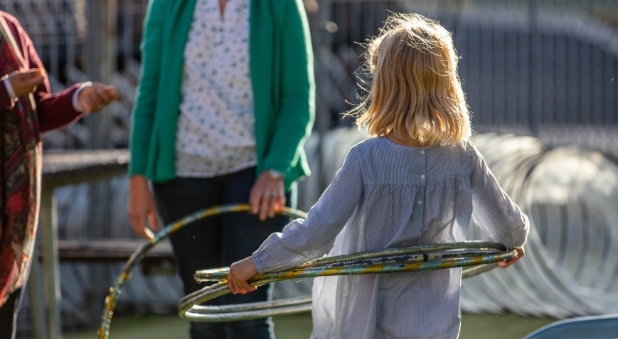“We are the fortunate ones: they’ve created a family for us,” Melanie* says of her two children.
When biology didn’t give Melanie and her husband Antonio* the opportunity to create children, the couple reached out to Anglicare to become foster carers and adoptive parents. Their eldest daughter was adopted through Anglicare Sydney’s local adoption program, and their son was fostered and then adopted.
“When you find out that you’re about to become a family, it is incredibly joyful,” Melanie says. “We just hope they’re happy and that we can find ways for them to navigate the complexities that are still there.”
The number of families seeking adoption grows
Melanie and Antonio are one of a growing number of couples now able to provide a permanent home for their children. According to figures released in July by the State Government, there were 162 carer adoptions in NSW in the year to June 30, 2020. This is up from 142 the previous year.
Anglicare Sydney has noticed a similar trend. “In the last five years, 35 children from Anglicare Sydney’s foster care program have been adopted by their foster carers. This is a significant increase,” says Elizabeth Byrne, the organisation’s senior program manager for adoption and guardianship.
This increase comes after a legislative change was passed by the NSW Government in 2014, providing a hierarchy of preferred permanency outcomes for children. This new legislation looks upon adoption as preferable to long-term foster care.
Adoption is the preferred positive outcome for children.
Adoption is always determined on what is in the best interests of the child, both now and in the future. In NSW, adoptions are open and children are able to have a relationship with their adoptive parents and their birth family. Unlike adoption in the 1950s and ’60s – which was shrouded in secrecy – children now find out about their birth family, have contact with them and can explore things like their cultural heritage, who they look like and their social and medical history.
Says Mrs Byrne: “There has been real progress made in understanding what adopted people need to know about their family connections and heritage, in order to develop a strong and healthy identity”.
Adoption is the preferred positive outcome for children as it removes uncertainty about living arrangements and provides a safe space for children to process the impact of their early childhood trauma.
“It creates a very sound secure place for some kids,” Mrs Byrne says. “One reason people seek adoption is for security. They like knowing the child is part of their family forever and the children like knowing they are not moving placements again or going anywhere else.”
Adopted by choice
This has been the experience for Dakota Kypreos, whose adoption papers were processed just shy of her 18th birthday. Miss Kypreos had been with her foster family since she was a child. Adoption just made sense as she had been raised by her foster family and identifies as one of them. At times she even feels more Greek than Australian due to her upbringing.
“[I try] to explain that this is a normal family, and that these people are my family,” she says. “I just call them my mum, dad and sisters.”
The application process took five years, and at times she felt it would never go through. “I just wanted to get it done before my HSC,” says Miss Kypreos, who found aspects of the process incredibly tough. “If I was going through the HSC and adoption at the same time, I would not be okay mentally at all.”
The day her papers were finalised, she took the day off school to celebrate. “It was a relief for me and my [foster] mum,” she says. “Because it was messing with all of us. I don’t think there’s a word to describe [how it felt]. You’re just speechless.”
The legal implications of being adopted, rather than remaining in permanent long-term foster care, meant she no longer felt split between two worlds. “It’s hard to explain to people… I feel like I’ve always been split in half,” Miss Kypreos says.
“It’s like you have a family you’ve been brought up with, but you also have the fact that you’re not related to them. You have a biological family that kind of just hang on. I still have a biological family, and I feel I have to have a connection with them, but [being adopted means] I don’t have to clarify I’m a foster kid.”
“I don’t think there’s a word to describe [how it felt]...”
Melanie is thankful that fostering and adoption is on the rise, as she has seen the positive impact it has had on her own children. “[My son] recently did a portrait of himself at preschool, not long after the adoption papers had gone through. He named his portrait his new family name and kept telling his preschool teachers, ‘This is who I am!’ Those things are very special.
“It seems more and more people are seeing it as something they can do, even if they have biological children themselves,” she says.
“Families come in all shapes and sizes. There’s so much out there about how important permanence is. They’re kids, and they want to be loved. They want to have people interested in them. A lot of people get worried about what it will be like, and we were too, but once they’re with you, it makes such an amazing difference in terms of what they bring out in you as well.”
*names changed to protect privacy

















